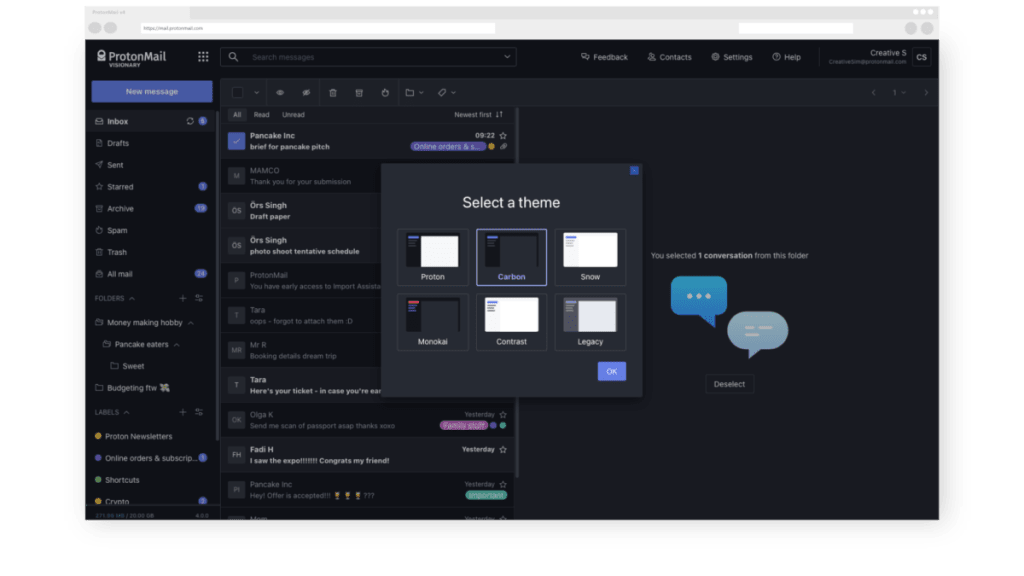A little over 7 years after we first released the first public beta for Proton Mail, we are excited to announce a newly redesigned Proton Mail for web! The new Proton Mail is available to everyone and offers a sharp new look, more personalization options, and an easy-to-use interface while still protecting your messages, contacts, and schedule with end-to-end encryption.

Focus on what really matters
The new Proton Mail offers a modern look and feel and an easy-to-use interface so you can spend less time managing your inbox and more time enjoying it.

The new Proton Mail offers:
- A brand new, modern look based on Proton’s new design language
- Multiple layouts and themes so you can personalize your inbox and choose what works for you

- Redesigned keyboard shortcuts that make it easier than ever to check messages
- Quick filters that let you easily sort messages
- A new App selector within your inbox that allows you to quickly switch between Proton services

Privacy that works for you
We have redesigned Proton Mail to be easy to use, but it still ensures you are in control of your information at all times. The new Proton Mail is a crucial step toward our vision of building an internet where privacy is the default.
You can use the new Proton Mail to send end-to-end encrypted emails to both people who use Proton Mail and other email services as well. The new Proton Mail also securely encrypts your messages, contacts, and schedule. You are the only person that can access your data — not even we can read your inbox.
Whether you receive a confirmation email that your package is on its way, an invitation to the big work meeting, or just a message from a friend, the new Proton Mail lets you choose what information you share and with whom. Privacy at Proton isn’t just a claim, it’s mathematically guaranteed through strong encryption.
Discover the new Proton Mail today
Starting today, the new Proton Mail is available for everyone. Sign in to new Proton Mail(new window) and discover how easy email can be. In the coming months, we look forward to also bringing the new Proton Mail experience to our mobile apps!
Thank you for choosing the new Proton Mail, and don’t forget to share your feedback.
